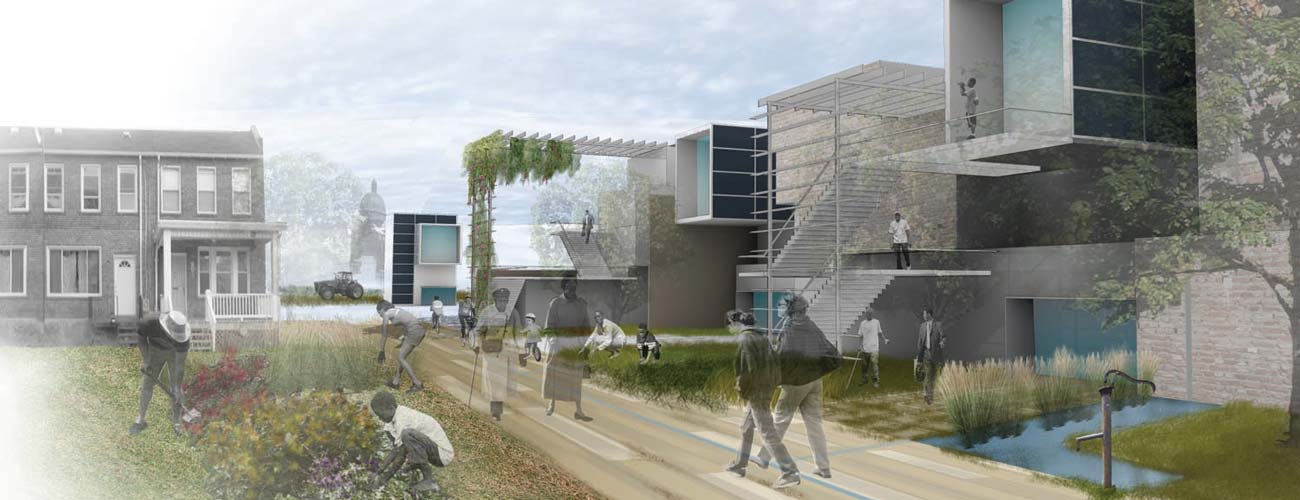Living Cities Masterplan
Like many post-industrial communities, the Larimer neighborhood has seen massive amounts of disinvestment in its residents, organizations and infrastructure. In collaboration with the community, evolveEA articulated a “living cities” vision that examined ways that energy independence, net zero water use, and localized food economies could make the existing community more resilient and attract and sustain equitable development.
evolveEA identified environmental performance goals as well as economic performance goals, and found new opportunities for community engagement and for design innovation. We applied environmental metrics that addressed both the physical infrastructure as well as the social and community networks that are needed to support this transformation. Our plan addresses change over time, resource flows and patterns and the dynamic between changing social and economic conditions as changes take place.
Cities are interwoven diagrams of economic, social and ecological patterns. As our society developed technology to build power lines, dams and levees, food supply networks, and other modern infrastructure we overcame many ecological limitations. As a result, city planning shifted away from ecological concerns to focus primarily on economic and social issues. We wanted to know what economic and social opportunities would arise if a neighborhood renewed itself by deep planning around environmental systems?
We wanted to test these ideas with a community in transition and so evolveEA collaborated with Larimer’s Kingsley Association and a core advisory group of nonprofits, businesses and other stakeholders. The project commited to net zero energy, net zero water use, and to producing food onsite, meaning that there were strong physical implications for the location and size of distributed energy production, integrating water management systems and aggregating food producing parcels. In addition, we examined the administration of each of these systems to see where their management would create opportunities for neighbors to work together in new ways that might shift our ideas of community and economic development.
From this work, we identified three major implications for planning. First, the neighborhood’s physical assets must be organized to match sources and uses and needs to operate at scales that challenge traditional community boundaries. Second, the community needs to build the organizational capacity to work together in new ways to vision, create and administer these systems. And last, there are milestones of ecological, economic and social performance that must be part of a long term sequence. When these milestones are met, they will address the equity concerns of current residents and anticipate future residents’ needs.

Most importantly is how these ideas translate into the design of powerful urban places. We proposed an urban form that embraces ecological and economic issues with the introduction of transit oriented development, bike paths and low carbon transit business opportunities. The plan proposes neighborhood areas and building types where the infrastructure for water management and energy production creates delightful urban spaces that become the neighborhood signature while serving as a working landscape. We have identified areas where flows of energy, water, and food become economic drivers to build physical, economic and social resiliency of the current and future residents.
The living cities vision presents great challenges to our existing urban fabric and to our current planning practices. The solutions are not simply technological but will require the integration of long term visioning, commitment to performative infrastructure and new social mechanisms to steward these changes across generations. While goals may be lofty, a focused masterplanning process can identify clear opportunities for immediate action while building community capacity to bring the vision to life.


